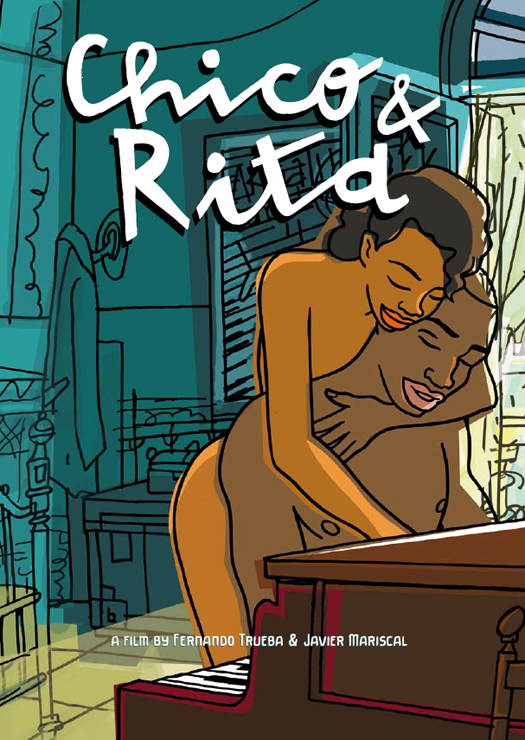
"Chico and Rita" has its New York premiere this Saturday at The Film Society of Lincoln Center
Javier Mariscal has designed many things over the course of his remarkable career: the logo for his hometown of Barcelona; Cobi, the mascot of the 1992 Summer Olympics; armchairs and hotels, bars and robots. Each is characterized with his unique sense of joy, wit and daring. Now he adds a full-length animated film, Chico & Rita, created in collaboration with his brother Tono Errando and director Fernando Trueba. It opens in New York this weekend as part of the Film Society of Lincoln Center's Spanish Cinema Now festival. If you love design, classic animation, or — especially — jazz, make it your goal to see this film.
Trueba, winner of a Best Foreign Film Oscar in 1992 for Belle Epoque, met Mariscal ten years ago when he asked him to design a poster for his Latin jazz documentary Calle 54. Since then they have collaborated on everything from music packaging and pop videos to restaurant design. It was Mariscal's brother and studio mate Errando who brought them together to create an animated film: "Trueba never had any experience making animation. Mariscal had never made a film. How could we work in a way that they could bring all their talents?" The subject was a passion they all shared: Cuban jazz.
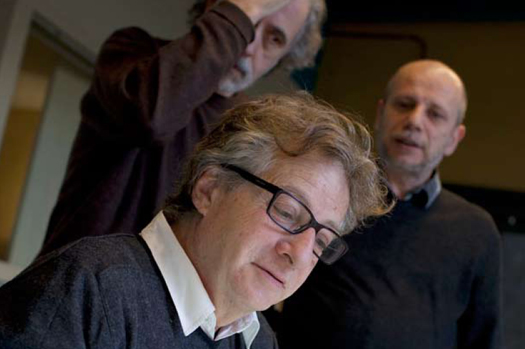
Javier Mariscal, center, Fernando Trueba, left, Tono Errando, right. Photographs: David Airob
Chico & Rita is set in the music scenes of Havana and New York in the late 40s and 50s, where Cuban emigres like Machito, Tito Puente and Chano Pozo mixed with jazz greats like Charlie Parker, Dizzy Gillespie and Ben Webster. Against that thrilling, steamy milieu the filmmakers set an archtypical love story: a piano player, Chico; a singer, Rita; love, betrayal, heartbreak. As Trueba has said, "For me, Chico & Rita is a song, a romantic song."
The animation style is classic, based on carefully researched period photography and live action reference filmmaking in Havana and New York. "Live action is very precise. Animation needs to invent another reality," says Errando. "You move a character using other ways, it's another quality of movement. We spent about six months discovering the balance." "Every decision is about the story," adds Mariscal, "Every point, every line, every color, every movement, every background is to tell the story."
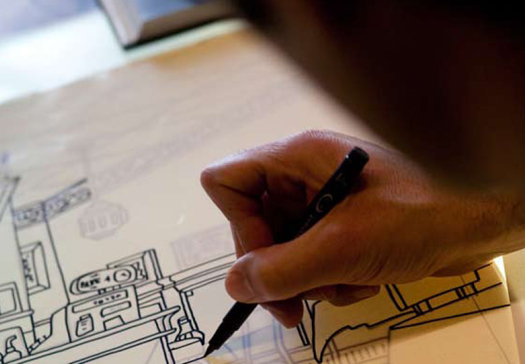
Mariscal draws Chico & Rita
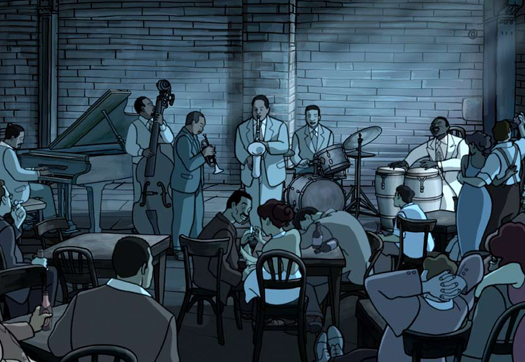
A New York nightclub scene
The result is a graceful, animated film that bears the unmistakable mark of Mariscal — his grace and whimsy infuse every frame — yet one with the tension and drama of Trueby's directorial vision. Nowhere is this more pronounced than the contrast between the sunny, color-drenched world of Havana, and the dark coolness of the New York nightclub world. "Havana and New York are two characters in the film," says Errando. "It's a film full of love and sensuality and color," agrees Trueba.
That last element — music — may be the most critical. The movie is set at a critical moment of transformation, in a time and place where the innovations of American bebop musicians combined with the playing of young Cuban emigres, when Dizzy Gillespie brought the percussionist Chano Pozo into his band and a new Afro-Cuban fusion began to emerge. The filmmakers' first impulse was to simply use existing scores by period jazz artists for the movie. But, with music so important, they decided in was necessary to record every song anew. "I had this idea of using contemporary musicians playing in the original musician's style," says Trueba. "Then I have to do like a cast for a movie. You ave to find a sax tenor player who can play as Ben Webster used to play, or an alto saxophone player who can play as Charlie Parker used to play." The filmmakers spent weeks recording with young musicians in New York, Spain and Cuba to get the score they wanted.
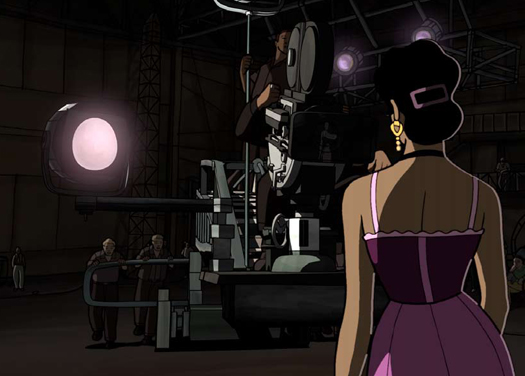
Rita prepares for a closeup
The result is an animated film that is both affecting and artistic. Viewers who know nothing of Mariscal's fame, Batista's Cuba, or the history of jazz in postwar New York will still be swept up in a simple love story, beautifully told. In cinema, says Mariscal, you can touch many things. "You take part of your own life, and a piece of time of the audience, ninety minutes, and you have this conversation together. This is not usual. When you work in colors and lighting, in characters and movement and voices, and these kinds of rhythms and music, you can say many things."
Javier Mariscal will speak about Chico & Rita on December 14 at New York's Instituto Cervantes. The lecture is free and open to the public.
